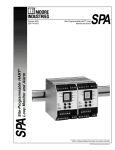Download USER`S MANUAL - Moore Industries International
Transcript
DCA Direct Current Alarm USER’S MANUAL August 2012 No. 192-701-00 H © 2012 by Moore Industries-International, Inc. Table of Contents Introduction 1 Description 1 Calibration 4 Installation 19 Maintenance 22 HR. DELIVERY 8 4 United States/Canada TOLL FREE 1-800-999-2900 United Kingdom FREE PHONE 0800 525107 Australia TOLL FREE 008 251928 Ask for the STAR Center 16650 Schoenborn Street Sepulveda, California 91343, U.S.A. Tel: (818) 894-7111 • Tlx: 65-1322 FAX: (818) 891-2816 CONNECT (MacNet): MIISEPULVEDA 1 Lloyds Court, Manor Royal, Crawley W. Sussex RH10-2QU, United Kingdom Tel: 0293 514488 • Tlx: 87667 FAX: 0293 536852 Moore Industries’ STAR* Center has a wide variety of quality instrumentation in stock and ready to ship. • Signal Transmitters • Temperature Transmitters • P/I and I/P Converters • Isolators and Converters • Indicators and Displays • Alarm Trips • Integrators and Totalizers • Power Transducers • Instrument Power Supplies • Racks, Rails and Enclosures Most instruments can be customized to meet your needs. Even then, you’ll never have to wait more than a few days. Moore Industries 3/18 Resolution Drive, Caringbah New South Wales 2229, Australia Tel: (02) 525-9177 • Tlx: 790-75914 FAX: (02) 525-7296 CENTER *Support, Technical Assistance, and Repair (our Quick-Ship Facility) DCA Page 1 Introduction Moore Industries’ Direct Current Alarm (DCA) is a highly versatile, fully adjustable device that is factoryconfigured to accept either current or voltage input. The unit’s internal relays are tripped when input deviates from a customer-set “safe” range defined by adjustable trip points. The DCA is ideal for use in an alarm system, where it may be used to activate a warning device, or to drive an analog indicator. This manual provides a brief description of the DCA, including its physical characteristics and options; a table of performance and operating specifications; a set of procedures for calibrating the unit; instructions for installation, including physical mounting and electrical connections; and finally, information on basic maintenance and troubleshooting. Notes, Cautions, and Warnings are included as a means of identifying those practices that may present unnecessary inconveniences (notes), result in damage to the unit (cautions), or cause injury (warnings). bination of single, dual, high, low, fail-safe, or non-failsafe alarm relays. The following paragraphs describe each of these configurations. High Alarm/Low Alarm. A DCA configured as a high alarm is tripped when the input increases, and reaches a customer-set trip point. A low alarm unit is tripped by a decreasing input that drops below a customer-set trip point. Figure 1 illustrates the concept. Fail-safe/Non-fail-safe. A fail-safe unit’s relay is energized when input is within a “safe” range, i.e. is normal, or not in an alarm condition. When the input goes into an alarm condition, reaching a trip point or losing power, the relay of a fail-safe DCA is deenergized. Conversely, a non-fail-safe unit’s relay is de-energized when input is within the customer-specified “safe” range, and is energized when the input reaches the trip point setting. Figure 1 also depicts the action of fail-safe relays. Description The DCA comes in either Moore Industries’ standard (STD) or plug-in card (PC) housing. The STD unit can be used with a variety of mounting options, including those suitable for use with explosion-proof and NEMA enclosures. PC-style DCA’s are designed for use with Moore Industries’ multi-position card racks; the surface mounted SMR, or the rack mounted RMR. Both STD and PC DCA’s are available with either single or dual alarm configurations. The relays used are single-pole/double-throw, form C. There are a number of input ranges and alternate relay ratings available. Operationally, the unit can be ordered with any com- Controls and Indicators Every type and configuration of DCA comes with potentiometers (pots) to set the alarm trip points of each installed relay. Additional pots for controlling unit dead band are available as an option, and precision ten-turn vernier scales can be used instead of the standard pots. Trip point pots afford full 0- to 100-percent adjustability over the unit’s specified span. Each installed relay is wired to a front panel LED, which lights when the relay is energized. Depending upon the type of relay ordered, i.e. fail-safe/non-failsafe, a lit LED can indicate either an “alarm” or a “nonalarm” input condition. Table 1 summarizes the alarm type/LED status options for the available types of DCA. DCA Page 2 HIGH-ALARM DCA 100 % RESET TRIP POINT DEAD BAND RESET ANALOG INPUT VALUE LOW-ALARM DCA 100 % 0% ANALOG INPUT VALUE DEAD BAND TRIP POINT 0% TIME TIME FAIL-SAFE RELAY ENERGIZED, LED ON FAIL-SAFE RELAY DE-ENERGIZED, LED OFF Figure 1. High - and Low-alarm Relay Configurations Table 1. DCA Alarm Types Model Number Designator This Unit is... S Single Alarm - - Only one relay installed D Dual Alarm - - Two relays are installed H1 High Fail-Safe Input increases, and exceeds Trip Point. (See Note 2). OFF in alarm ON in Non-alarm DE-energized in alarm Energized in Non-alarm H2 High NON-Fail-Safe Input increases, and exceeds Trip Point. (See Note 2). ON in Alarm, OFF in Non-alarm Energized in Alarm, DE-energized in Non-alarm Input decreases, and drops below Trip Point (See Note 2) OFF in alarm ON in Non-alarm DE-energized in alarm Energized in Non-alarm Input decreases, and drops below Trip Point (See Note 2) ON in Alarm, OFF in Non-alarm Energized in Alarm, DE-energized in Non-alarm L1 Low Fail-Safe L2 Low NON-Fail-Safe This Unit signals an “Alarm” condition when... Its LED will be... Relay(s) NOTES: 1. Older DCA’s may use X1 for H1, X2 for H2, X3 for L1, and X4 for L2. 2. The “UPPER” and “LOWER” labeling on the DCA front panel is for reference only. Configurations where “LOWER” terminals and pots pertain to the unit’s high alarm, for example, are quite possible. 3. Relays in fail-safe alarms are DE-energized in the event of power loss to the unit. DCA Page 3 Table 2 lists the performance and operational specifications for the unit. Options Each DCA is configured according to customer requirements. The paragraphs on the following pages highlight some of the options available. Table 2. DCA Performance and Operational Specifications Characteristic Input Specifications Current: 1-5 mA @ 200Ω nominal input impedance 4-20 mA @ 50Ω nominal input impedance 10-50 mA @ 20Ω nominal input impedance Selectable Current (SC) comes with three load resistors for selecting1-5, 4-20, or 10-50 mA (See Note 1) Voltage: 0.25-1.25 V @ 1MΩ, minimum (See Note 2) 1-5 V @ 1MΩ, minimum Consult factory for dual input and special range options. Factory-configured with one (Single DCA) or two (Dual DCA) single pole/double throw (SPDT), form C, mechanical relays rated for 5 A @ 117 Vac non-inductive, or 28 Vdc. Output User selects Normally Open (NO), Normally Closed (NC), or any combination of NO/NC configurations during installation. Fail-safe/Non-fail-safe configuration factory-set. Refer to table 1 for available combinations. Double pole/double throw (DPDT), form 2C and 7.5 A relays available as options. (See Note 3) Power Performance Environmental Ratings NOTES: 24 or 45 Vdc ±10%, 5 watts nominal 100, 117, 200, 220, or 240 Vac ±10%, 50/60 Hz AC power inputs not available with PC-style housing Repeatability: Trip point settings repeat within ±0.1% of span. Dead Band: 1% of span, standard. Adjustable Dead Band Option available. Alarm Response: 50 milliseconds for step change of 1% of span. Line Voltage Effect: ±0.005% per 1% line voltage change (ac or dc). Isolation: No galvanic path between input, output, and power. Accuracy: Front panel potentiometers capable of setting trip points from 0 to 100% of span. Lockable, scaled vernier dials optional. Effect of Ambient Temperature on Performance: Less than ±0.018% per °C through the specified range (Less than ±0.01% per °F) Ambient Operating Temperature: –18 to 65 °C (0 to 150 °F) 1. One of the available resistors MUST be installed. 2. Requires extra engineering when used with some option combinations. 3. DPDT not available with some enclosures and option combinations. DCA Page 4 For a complete list of available options, and for information on other housings, mounting hardware, and enclosures, contact your Moore Industries Sales Representative. TX Option — Two-wire Transmitter Excitation. Rated at 30 Vdc @ 25 mA. 7.5A Option — 7.5 amp Relay(s). Rated by CSA and UL at 7.5 amps, 28 Vdc or 120 Vac. AD Option — Externally-adjustable Dead Band. Front panel potentiometers vary dead band 1- to 20percent of span (nominal), 1- to 50-percent of span (AD50), or 1- to 100-percent (AD100) of span. (AD Option not available with some option combinations). Model/Serial Number. Moore Industries uses a system of unit model and serial numbers to keep track of factory configuration and options for each DCA shipped and serviced. AR Option — Response Time Delay. Set by the factory for output delays of 1 to 5, 10, 15, 20, 25, or 30 seconds, according to customer specification. The example outlines the significance of each field of information in a typical DCA model number. Refer to table 1 for an explanation of the relay configuration codes used. DA Option — Deviation Input. Unit signals alarm condition when the difference between two inputs exceeds adjustable percent of full span. Requires DI Option or 2X input. (Not available with some option combinations.) DI Option — Dual Input. Configures dual-alarm DCA to operate as two, single-alarm units. Standard DI unit provides a high alarm for one input and a low alarm for the other. (DI Option not available with some option combinations). DPDT Option — Double Pole, Double Throw/Form 2C Relays. Contact 5 amps at 28 Vdc, or 117 Vac noninductive. (DPDT Option not available with some option combinations). If service information or assistance for a DCA is needed, make a note of the unit’s model and serial number before contacting Moore Industries’ Customer Service Department. Our highly skilled technicians will be happy to assist you. STD units’ serial and model numbers are located on an L-shaped metal tag at the top of the connection terminal strips. On PC DCA’s, the numbers are located on an adhesive label affixed to the side of the front panel. Calibration HS Option — Hermetically Sealed Relays. Rated 1A @ 117 Vac non-inductive, 2A @ 28 Vdc. Meets requirements for installation in Class I, Division 2 locations. Every DCA shipped from the factory is manufactured and tested according to Moore Industries’ exacting standards for product quality. A bench check of basic unit operations is recommended, however, in order to identify any damage to the unit that may have occurred during shipping. This also allows the user to effect operational adjustments to trip point settings and unit dead band, if available. MR Option — Manual Reset. External reset push button for single- and dual-alarm units. In place of dead band, MR-equipped units return to normal only when the process input returns to non-alarm state and the external reset push button is pressed. It is recommended that the procedures in this section be carried out at a technician’s bench or in a similar lab environment. This is the safest means of making adjustments to trip point values; isolated from the intended DCA application. TT Option — Lockable Vernier Dial. Front panel, multiturn potentiometers for setting and locking trip points. Includes front panel ZERO potentiometer for appropriate offsets. The calibration of the DCA consists basically of setting trip points and dead bands based on the resistance across the unit contact-closure terminals as measured by an ohmmeter. With relay contacts closed, resistance is negligible. With relay contacts open, resistance is infinite. FU Option — Power Fuse. 400 mA rated fuse on PC-style unit. Use of the FU Option with the STD housing requires special engineering. DCA Page 5 EXAMPLE DCA / 4-20MA / DH1L1 / 117AC / -AD [STD] Unit Type Input Relay Configuration Power Options(s) Housing Basic Calibration Setup The equipment listed in table 3 is needed for calibrating the DCA. These items are not supplied with the unit, but should be available in most testing labs. Be sure to use calibrated test equipment when performing the bench check and calibration of the DCA. The use of inaccurate test equipment may result in unreliable settings for the unit’s trip point(s), etc. Table 3. DCA Calibration Equipment Equipment VoltageVoltage or Current Source or Current Source Power Source Ohmmeter Screwdriver Wire Jumpers (required for AR-equipped DCA’s ONLY) Extender Card (optional for use with PC-style DCA’s ONLY) Specifications Calibrated, adjustable unit, capable of output at discrete levels in the appropriate range, with the rated impedance for the unit being calibrated. EDC Models MV105, MV155, or equivalent. AC or dc power input appropriate for the type of DCA being calibrated. Refer to table 2, earlier in this manual. Accuracy of ±1%, minimum. Slotted-tip with head width no greater than 2.54 mm (0.01 in). Temporary jumper wiring suitable for shorting AR Option diodes so that the alarm delay may be defeated while adjusting the unit’s trip point settings. Moore Industries’ part number 350-513-00. DCA Page 6 Setup for the STD DCA. Figure 2 shows the labeling used on the front panel of the STD DCA. Figure 3 shows the terminals on a unit equipped with DPDT relays. DCA To access the connection terminals for a DCA in the basic extruded housing (STD, AB, etc.), use a screw driver to remove the securing screw from the protective plastic cover on the unit front panel. With the screw removed, the cover can be removed by hand, revealing the terminals and the labels depicted in the illustrations in this manual. DC CURRENT ALARM UPPER LOWER ZERO UPPER RELAY NORMALLY OPEN — UNO COMMON — COM UPPER RELAY NORMALLY CLOSED — UNC ACC — –DC AC — +DC GND UPPER DEADBAND LOWER LNO — LOWER RELAY NORMALLY OPEN COM — COMMON LNC — LOWER RELAY NORMALLY CLOSED OPTION — +TX FOR TRANSMITTER EXCITATION, +REF FOR DEVIATION ALARM +IN — CURRENT OR VOLTAGE +INPUT -IN — CURRENT OR VOLTAGE -INPUT NOTES: 1. Each unit is factory-configured for ac or dc power. 2. Each unit is factory-configured for specific current or voltage input. Figure 2. STD DCA Terminal Locations DCA Page 7 DCA DC CURRENT ALARM UPPER LOWER UNO2 — UPPER RELAY #2 NORMALLY OPEN COM — COMMON ZERO UPPER RELAY #1 NORMALLY OPEN — UNO1 COMMON — COM UPPER RELAY #1 NORMALLY CLOSED — UNC1 UNO2 — UPPER RELAY #2 NORMALLY CLOSED UPPER LNO1 — LOWER RELAY #1 NORMALLY OPEN DEADBAND LOWER ACC — –DC COM — COMMON LNC1 — LOWER RELAY #1 NORMALLY CLOSED LNO2 — LOWER RELAY #2 NORMALLY OPEN COM — COMMON AC — +DC LNC2 — LOWER RELAY #2 NORMALLY CLOSED GND OPTION — +TX FOR TRANSMITTER EXCITATION, +REF FOR DEVIATION ALARM +IN — CURRENT OR VOLTAGE +INPUT -IN — CURRENT OR VOLTAGE -INPUT Figure 3. STD DCA w/DPDT Option Terminal Locations Figure 4 shows the labeling for a STD DCA equipped with the DI Option. Note that both inputs share the “– IN” terminal. WARNING To guard against accidental electric shock, it is recommended that the protective plastic cover be re-installed over the terminal strip of the STD DCA before applying power to the calibration setup. DCA Page 8 Setup for the PC DCA. There are two methods of carrying out the calibration setup connections on the PC DCA. Most often the unit is installed in one of Moore Industries’ card racks, and the calibration equipment is connected to the appropriate rack terminal strip. Figure 5 illustrates the PC DCA installed in the surface mounted card rack, the SMR. Figure 6 shows the terminal strip labeling for rack units when the DCA is equipped with the DI Option. As an alternative to using the card rack, individual PC DCA’s can be checked with Moore Industries’ Process Power Supply, the PPS, equipped with its CT Option. The CT-equipped PPS accepts the connection strip of the PC DCA in a connector built into its side panel. The PPS front panel provides access to terminal strips similar to those used on the card racks. Whether using the card rack or the PPS/CT combination, note that the DC power connections are not made directly to the unit, but to the terminal strips of either the card rack or the PPS. DC power is supplied to the DCA at its pins 8 and 9 NOTE The “UPPER” and “LOWER” labeling used on the DCA is for reference purposes only. The trip point pots allow for adjustments through 100percent of span. It is therefore possible for the connections to the “LOWER” labeled alarm section to be configured as a “high alarm”, and the “UPPER” section to be configured as a “low alarm”. NOTE The LED’s DO NOT always indicate an alarm condition; rather, they light to show that their complimentary relay is energized. It is possible for a DCA to be configured such that the LED’s are lit when input is in a “non-alarm” state. LNO — LOWER RELAY NORMALLY OPEN COM — COMMON LNC — LOWER RELAY NORMALLY CLOSED ACC — –DC +IN UP — UPPER CURRENT/VOLTAGE +INPUT AC — +DC +IN LOW — LOWER CURRENT/VOLTAGE +INPUT GND -IN — NEGATIVE INPUT Figure 4. STD DCA with DI Option Terminal Locations DCA Page 9 1 PC DC A INTERNAL RACK SLOT AND CONNECTOR 15 PC DCA COMPONENT SIDE SMR MOUNTING FLANGES -DC +DC GND ONE POWER CONNECTION PER RACK ONE TERMINAL STRIP PER CARD POSITION 7 LNO - LOWER RELAY NORMALLY OPEN 4 LNC - LOWER RELAY NORMALLY CLOSED 2 COM - COMMON 5 OPTION — +TX, +REF 3 +IN — CURRENT OR VOLTAGE + INPUT 10 -IN — CURRENT OR VOLTAGE - INPUT 13 UNO - UPPER RELAY NORMALLY OPEN 1 UNC - UPPER RELAY NORMALLY CLOSED 15 COM - COMMON NOTES : 1. Rack is shown with protective covers removed. 2. Power is not applied to each PC connector strip, but to the rack terminal strip. Power is supplied to the PC DCA at its pins 8 (DC) and 9 (–DC). Figure 5. Terminals Labeling, the PC DCA in the SMR DCA Page 10 ONE TERMINAL STRIP PER CARD POSITION 7 LNO - LOWER RELAY NORMALLY OPEN 4 LNC - LOWER RELAY NORMALLY CLOSED 2 COM - COMMON 5 +IN — UPPER ALARM CURENT OR VOLTAGE +INPUT 3 +IN — LOWER ALARM CURRENT OR VOLTAGE + INPUT 10 -IN — CURRENT OR VOLTAGE - INPUT 13 UNO - UPPER RELAY NORMALLY OPEN 1 UNC - UPPER RELAY NORMALLY CLOSED 15 COM - COMMON Figure 6. PC DCA with DI Option Terminal Locations Setup of DCA’s in Explosion-proof Enclosures. The DCA in an explosion-proof enclosure (EX) incorporates a modification of the STD housing where the connection terminals are replaced with pins on the unit bottom panel. These pins are inserted in a terminal block permanently mounted inside the base of the explosion-proof enclosure. To effect the calibration connections, unscrew the top of the enclosure and pull the DCA up and out of the enclosure base, exposing the terminal block. Figure 7 shows the block and its labeling. Figure 8 shows the labeling used for units equipped with the DI Option. Use the appropriate terminal locations figure to connect the calibration equipment to the terminal block in the enclosure base. Then re-connect the DCA by aligning the pins on the bottom of the unit housing with the holes in the terminal block. Press down until the unit is seated firmly in the enclosure base. CAUTION The EX DCA housing fits into the terminal block in its correct orientation only. Note the position of the connection “key”. Attempting to “force” the unit in when the pins are not aligned with the correct holes will bend the pins. Basic Calibration Hookup. Use the terminal locations figure that is appropriate for the type of DCA being checked, and connect the equipment described in the calibration equipment table as shown in the calibration hookup diagram, figure 9. Set all low alarm pots fully counterclockwise. DCA pots are equipped with slip clutches to prevent damage in the event of over-turning. A slight change in torque may be felt when a wiper stop is reached. If unable to sense the stop, set pot 15 turns counterclockwise. DCA Page 11 7 6 GND COMMON — COM 8 5 +DC — AC LOWER RELAY NORMALLY CLOSED — LNC 9 4 –DC — ACC OPTION — +TX FOR TRANSMITTER EXCITATION, +REF FOR DEVIATION ALARM 10 3 UNC — UPPER RELAY NORMALLY CLOSED CURRENT OR VOLTAGE +INPUT — +IN 11 2 COM — COMMON CURRENT OR VOLTAGE -INPUT — -IN 12 1 UNO — UPPER RELAY NORMALLY OPEN ` LOWER RELAY NORMALLY OPEN — LNO Figure 7. DCA in an Explosion-proof Enclosure Terminal Locations LOWER RELAY NORMALLY OPEN — LNO 7 6 GND COMMON — COM 8 5 +DC — AC LOWER RELAY NORMALLY CLOSED — LNC 9 4 –DC — ACC UPPER ALARM CURRENT OR VOLTAGE +INPUT — +IN UPP 10 3 UNC — UPPER RELAY NORMALLY CLOSED LOWER ALARM CURRENT OR VOLTAGE -INPUT — +IN LOW 11 2 COM — COMMON CURRENT OR VOLTAGE -INPUT — -IN 12 1 UNO — UPPER RELAY NORMALLY OPEN Figure 8. DCA with DI Option in an Explosion-proof Enclosure Terminal Locations DCA Page 12 APPROPRIATE + CALIBRATED ADJUSTABLE CURRENT OR VOLTAGE SOURCE – +IN XNO# DCA COM OHMMETER –IN XNC# + – (SEE NOTE 1) (SEE NOTE 3) + – VDC or VAC POWER SOURCE (SEE NOTE 2) NOTES: 1. Check unit model number for appropiate input source. 2. Check unit model number for appropriate power source. 3. X = U for upper or L for lower. Connect ohmmeter to "NO" for terminals of normally open relay, to NC for normally closed. “#” is used in DPDT-equipped units to refer to the number of the alarm output, as in UNO1 and LNC2. Figure 9. The DCA Calibration Setup Special Considerations for AR-equipped DCA’s. Units equipped with the AR Option are factory-set for specific alarm delay times ranging from 1 to 30 seconds (refer to Options listing). The AR is set and fully calibrated according to customer requirements before unit shipment. The delay in an AR-equipped DCA’s transition from normal to alarm condition makes the calibration of trip points difficult, and a temporary disabling of the option is therefore recommended during the calibration procedures. To defeat the AR Option, diodes on PC1 of the DCA must be shorted. There is a diode for each installed relay. DCA’s in the STD housing must be partially disassembled to access the AR diode(s). See figure10. Figures 11 and 12 show the location of the diodes on the various types of AR-equipped DCA. Access to the AR diode(s) on PC-style DCA’s may be difficult if the unit being calibrated is already installed in its rack. Moore Industries offers an Extender Card accessory for calibrating units under these circumstances. The Extender, P/N 350-513-00, mates with the connector on the PC-style DCA, and then plugs in to the rack so that the unit is clear of the rack front, allowing for access to the diode(s). Calibration Procedures Before beginning the actual calibration of the DCA, check the unit’s model number to verify that the correct power supply and input simulator is being used. Make sure that the appropriate connections are made as shown in the figures of the preceding section. Using the Calibration Procedures. The Calibration Procedures section is divided into subsections that describe first low alarm, then high alarm trip point setting. The procedure for calibrating the DCA dead band, for units equipped with the AD Option, should be conducted after the trip points are set. If the DCA to be calibrated is equipped with the TT Option, skip to and complete the procedure in the section entitled “Calibrating DCA’s Equipped with the TT Option”. DCA Page 13 Figure 10. STD DCA Disassembly RELAY FOR DUAL-ALARM PC DCA SHORT AROUND THESE DIODES FRONT PANEL RELAY CONNECTOR PINS FOR SINGLE-ALARM PC DCA SHORT AROUND THIS DIODE Figure 11. AR Option Diodes on the PC DCA DCA Page 14 LED’S RELAY RELAY PC 2 FOR SINGLE ALARM STD DCA SHORT AROUND THIS DIODE PC 1 FOR DUAL ALARM STD DCA SHORT AROUND THESE DIODES Figure 12. AR Option Diodes on PC1 of the STD DCA Setting Low-Alarm Trip Points. Remember that the “UPPER” and “LOWER” labeling on the DCA is for reference purposes only. The DCA can be ordered without low alarms, as in a “high/high” configuration. Dual alarm units can be ordered with either one or both relays configured as low alarms, and DPDTequipped DCA’s may be configured with any combination of high/low alarms. Refer to the unit’s model number to determine the alarm configuration, and perform the following procedure for each installed low alarm. 3. Apply 100% of application’s input span (current or voltage, as appropriate) to DCA. If low alarm is configured as fail-safe, L1 in model number, verify that appropriate LED for that alarm is lit. LED for non-fail-safe low alarm, L2 in model number, will not be lit. 4. Note ohmmeter reading. 1. Check model number to verify correct power input, and apply 117 or 240 Vac; 24 or 45 Vdc, as appropriate. In a low alarm, 100% input is a non-alarm condition. If connected to XNO and COM terminals (X = U or L, UPP or LOW; NO = normally open), Resistance across the terminals in a fail-safe alarm is zero. In a non-fail-safe alarm resistance will be near infinite. 2. Make sure that ohmmeter in calibration setup is connected to appropriate -NO or -NC terminals, as desired. If connected to XNC and COM terminals, resistance is infinite in fail-safe, zero in non-fail-safe alarms. DCA Page 15 5. Set input to desired low alarm trip point level. 6. Turn appropriate low alarm adjustment pot (may be labeled “UPPER” or “LOWER”) slowly clockwise. Observe LED and ohmmeter, and stop turning at exact point where relay changes state. Vary pot setting slightly above and below trip point to “zero in” on exact setting. If low alarm is configured as fail-safe, L1 in model number, verify that appropriate LED for low alarm is not lit. LED for non-fail-safe low alarm, L2 in model number, will be lit. 7. Verify desired setting by varying input above and below trip point level (from step 6) and observing both LED and ohmmeter to confirm change of relay state at, and below trip point setting. NOTE Units equipped with any Manual Reset Option have external push buttons that must be pressed to reset the relays once they have been tripped. Setting High-Alarm Trip Points. Remember that the “UPPER” and “LOWER” labeling on the DCA is for reference purposes only. The DCA can be ordered without high alarms, as in a “low/low” configuration. Dual alarm units, on the other hand, can be ordered with either one or both relays configured as high alarms. Refer to the unit’s model number to determine the alarm configuration, and perform the following procedure for each installed high alarm. 1. Check model number to verify correct power input, and apply 117 or 240 Vac; 24 or 45 Vdc, as appropriate. 2. Make sure that ohmmeter in calibration setup is connected to appropriate -NO or -NC terminals, as desired. 3. Apply 0% of application’s input span (current or voltage, as appropriate) to DCA. If high alarm is configured as fail-safe, H1 in model number, verify that appropriate LED for that alarm is lit. LED for non-fail-safe low alarm, H2 in model number, will not be lit. 4. Note ohmmeter reading. In a high alarm, 0% input is a non-alarm condition. If connected to XNO and COM terminals (X = U or L, UPP or LOW; NO = normally open), Resistance across the terminals in a fail-safe alarm is zero. In a non-fail-safe alarm resistance will be near infinite. If connected to XNC and COM terminals, resistance is infinite in fail-safe, zero in non-fail-safe alarms. 5. Set input to desired high alarm trip point level. 6. Turn appropriate high alarm adjustment pot (may be labeled “UPPER” or “LOWER”) slowly clockwise. Observe LED and ohmmeter, and stop turning at exact point where relay changes state. Vary pot setting slightly above and below trip point to “zero in” on exact setting. If high alarm is configured as fail-safe, H1 in model number, verify that appropriate LED for that alarm is not lit. LED for non-fail-safe high alarm, H2 in model number, will be lit. 7. Verify desired setting by varying input above and below trip point level (from step 6) and observing both LED and ohmmeter to confirm change of relay state at, or above trip point setting. NOTE Units equipped with any Manual Reset Option have external push buttons that must be pressed to reset the relays once they have been tripped. DCA Page 16 Setting the Dead Band. See figure 1 for a graphic representation of the DCA dead band. The dead band may be thought of as an “area” around a trip point in which the alarm will not reset. In a scenario using a high-alarm DCA as an example, the unit will signal an alarm at its trip point, and will continue to signal an alarm as long as the input is above that point. Without an adjustable dead band, the relay will reset when the input drops below the trip point. When equipped with the AD Option, however, no reset will occur until the input continues to drop to the dead band setting, presumably some percentage of span below the trip point. To set the DCA dead band: 1. Make sure dead band pots are turned fully counterclockwise. Set trip points for installed alarms as described in preceding section. Connect ohmmeter to UPPER alarm section to set UPPER dead band, or to LOWER section for setting LOWER dead band. 2. Apply input at the dead band setting level. Typically, this will be lower than trip point for high alarms, or higher than trip point for low alarms. 3. Turn appropriate dead band pot slowly clockwise, observing LED and ohmmeter. 4. Set pot (stop turning) at exact point at which relay changes state. 5. Verify desired setting by varying input above and below trip point, observing both LED and ohmmeter to confirm appropriate change of relay state. Unit will “trip” at trip point setting, and will not reset until input returns past dead band setting. The DCA dead band can be expressed as a percentage of the unit’s factory-configured span. For Example: A single, high-alarm DCA rated for 4-20 mA input is required to have a 25% dead band around its 14 mA trip point setting. To calculate the input level needed to set the desired dead band, subtract 25% of 16 mA (span) from 14 mA: Trip point setting in mA = 14 – 25% of input span in mA = 16(0.25) 14 – 4 = 10 The result, 10 mA, is the level of input to be applied in step 2. The DCA in this example will signal an alarm condition when the input reaches or exceeds 14 mA, but will not reset until the input drops below 10 mA. Calibrating TT-equipped Units. Lockable, multiturn trip point adjustment pots on the front panel of each TT-equipped DCA are set at the factory so that “0.00” on the dial is equal to 0% of the application’s rated input span. “10.00” is equal to 100% of span. The accuracy of these settings is ±0.5% of the rated span. Calibration of DCA’s with this option consists of two procedures. First, the internal, Full-Scale Adjust (FSA) potentiometer(s) must be set (this involves some disassembly of the STD DCA). Then, the unit zero, trip points, and dead band (if so-equipped), must be set. Figure 13 shows the location of the STD DCA FSA potentiometers. Figure 14 shows the location of the pots on the PC-style unit. Refer to figure 10 when disassembling the unit in STD housing, and refer to figures 13 or 14 while executing the procedure. NOTE The following procedure assumes that the DCA being calibrated has its “UPPER” alarm section configured as a high alarm, and its “LOWER” alarm section configured as a low alarm. If this is not the case for your DCA, interchange references to “UPPER” and “LOWER”, as appropriate. DCA Page 17 LED’S RELAY RELAY LOWER FULL-SCALE ADJUSTMENT POT (DUAL ALARMS ONLY) PC 1 UPPER FULL-SCALE ADJUSTMENT POT Figure 13. Location of the FSA Potentiometers on the STD DCA PC1 UPPER FULL-SCALE ADJUSTMENT (DUAL ALARM ONLY) CONNECTOR PINS FRONT PANEL FULL-SCALE ADJUSTMENT (SINGLE ALARM ONLY) LOWER FULL-SCALE ADJUSTMENT (DUAL ALARM ONLY) Figure 14. Location of the FSA Potentiometers on the PC DCA DCA Page 18 1. With the hookup described in the Calibration Setup Section complete, disable AR Option as described in section titled “Calibrating ARequipped DCA’s”. Connect ohmmeter to “UPPER” alarm terminals first. 2. Verify that all pots are set fully counterclockwise, to 0.00. NOTE Steps 3 through 10 apply to high alarms. Skip to step 11 to calibrate the ten-turn dials on low alarms. 3. Apply 0% of appropriate input from application. Refer to unit’s model number and specifications listing in table 2. 4. Turn ZERO pot clockwise until both “UPPER” and “LOWER” alarms trip. 5. Apply 100% input to setup. 6. Turn “UPPER” and “LOWER” pots clockwise to 10.0 setting. 7. Turn internal FSA pots fully counterclockwise. High alarm will change state. Disregard low alarm at this time. 8. Turn FSA pot for “UPPER” alarm slowly clockwise, observing ohmmeter and appropriate front panel LED. 9. Set FSA pot (stop turning) at exact point at which high alarm is tripped. If high alarm is configured as fail-safe, H1 in the unit model number, verify that appropriate LED for high alarm is not lit. The LED for a non-fail-safe high alarm, H2 in the model number, will be lit. 10. Disconnect ohmmeter, and reconnect it to “LOWER” alarm section of DCA. 11. With input at 100%, and ohmmeter connected to “LOWER” alarm section of unit, turn appropriate “LOWER” FSA pot fully clockwise. Note that low alarm trips. 12. Turn “LOWER” FSA pot slowly clockwise, observing ohmmeter and appropriate front panel LED. 13. Set FSA pot (stop turning) at exact point at which low alarm is tripped. If low alarm is configured as fail-safe, L1 in the unit model number, verify that appropriate LED for low alarm is not lit. The LED for a non-fail-safe low alarm, L2 in the model number, will be lit. 14. Alternate the input between its rated 0 and 100% level, verifying the setting of the unit’s front panel pots (0.00 at 0% input, 10.00 at 100% input). Readjust both FSA pots as necessary. Calibrating DA -equipped Units. If ordered, the Deviation Alarm Option allows the user to set alarm trip points based on the difference between two inputs. This difference is expressed as a percentage of total input span, and unit relays are “tripped” whenever process input varies, more than (high alarm) or less than (low alarm) the set percentage. To calibrate DA-equipped DCA’s, a second input source will be needed. Refer to table 3, and use two of the appropriate sources as specified. Refer to figures 2 through 8 as appropriate, to determine which of the unit terminals is used for the second, reference input connection. Finally, refer to the setup shown in figure 9, and add the connection for the second input source as follows: “+REF” is used for positive reference input, and the negative connection for both inputs is common, the “– IN”. To calibrate DA-equipped DCA’s: 1. With setup complete as described in preceding paragraph, and all pots set fully counterclockwise, determine percentage of rated input span that is to serve as difference between reference input and input #2. 2. Set reference input to 50% of rated span. DCA Page 19 3. Set input #2 to desired percentage above or below reference. Installation 4. Set trip points as appropriate, using UNC pot for UPPER normally closed alarm, UNO pot for UPPER normally open; LNC for LOWER normally closed, and LNO for LOWER normally open. Base settings on input #2. Installing the DCA is typically accomplished by physically mounting the unit, then effecting the electrical connections. Units factory-configured as high alarms will “trip” when input #2 exceeds the desired difference. Low alarms “trip” when input #2 falls below desired difference. For Example: A DA-equipped DCA is rated for two, 4-20 mA inputs (“2X” in the model number). The application calls for an alarm condition when input #2 varies more than 25% of span from the reference input. Span = 16 mA 25% of 16 = 4 mA The reference input is set to 50% of rated span, or 12 mA. Input #2 is set 25% higher, 16 mA. The trip point pots are turned clockwise until relays change state. Regardless of how the reference input is varied, from 4 to 20 mA, as long as input #2 is likewise varied at a 50% offset, the alarms are not “tripped”. However, if the reference is at 12 mA and input #2 is at 20 mA, the high-alarm relay will indicate an alarm condition. Likewise, if the reference is at 12 mA and input #2 is at 14 mA, the low-alarm relay will indicate an alarm. Mounting Figures 15 and 16, respectively, show the outline dimensions of the DCA in the STD and the PC housing styles. The drawing of the STD housing includes the dimensions of the U-bracket, typically included with that type of DCA, and also of the side housing used for DCA’s equipped with the DPDT option. Always try to install the DCA in an area relatively free of dust, excessive moisture, or corrosives. Contact your Moore Industries Sales Representative for information on other types of DCA housings, enclosures, and mounting hardware. Making Electrical Connections Figure 17 illustrates the installation hookup for the unit. Refer to the terminal location figures in the Calibration Section when making the electrical connections associated with installing the DCA. Though there is no special wiring required for standard connections, the use of shielded, twisted wiring is recommended for all low-level signals, or where connecting leads are run close to other services such as power wiring. Ground the shield wire as close to the DCA as possible in the installation. DCA Page 20 9.5 mm (0.38 in) 76.2 mm (3.00 in) 76.2 mm (3.00 in) 66 mm (2.60 in) 63.5 mm (2.50 in) DCA DC CURRENT ALARM UPPER LOWER ZERO 167 mm (6.56 in) 186 mm (7.31 in) 154 mm (6.08 in) COVER 6.4 mm (0.25 in) 63.3 mm (2.49 in) 95 mm (3.75 in) 102 mm (4.00 in) Figure 15. STD DCA Outline Dimensions, Including DPDT Option When making the electrical connections for units in explosion-proof enclosures, route the wiring through the conduit hubs in the enclosure with enough slack to reach the appropriate terminal. Units in oil- or water-tight NEMA enclosures require the use of Myer Scru-Tite (or equivalent) fittings to maintain the enclosure integrity when routing wiring conduit to or from the DCA. WARNINGS Do not apply power to the DCA until all connections are secure. The uncovered power input terminals of ac-powered STD DCA’s present an electric shock hazard. Always turn off the power to the unit before servicing. DCA Page 21 Figure 16. PC DCA Outline Dimensions (SEE NOTE 2) CURRENT OR VOLTAGE SOURCE +OUT –OUT XNO +IN –IN DCA COM ALARM INDICATOR XNC + – + VDC–or VAC POWER SOURCE (SEE NOTE 1) NOTES: 1. Check the model number for power source requirements. 2. X=U for upper alarm section, high or low, or L for lower alarm section, high or low. NO=normally open NC=normally closed Figure 17. DCA Installation Hookup DCA Page 22 PC DCA’s slide into card slots in Moore Industries’ nineteen-inch card racks, the SMR and RMR. Each DCA has individual contacts on its rear edge that mate with an edge connector at the back of the rack. Maintenance Once the DCA is properly calibrated and installed, it will operate indefinitely. No further adjustments should be necessary, unless the unit is moved, or the process input changes. It is recommended that the unit terminals be checked periodically for signs of oxidation or looseness. If a problem develops with the performance of the DCA, remove the unit from service and recalibrate. Refer to the Calibration Section of this manual for instructions. Any units found to be performing below specifications after a recalibration should be returned to the factory immediately. Instructions for unit return can be found on the back cover of this manual. Customers may also contact the friendly folks in Moore Industries’ Customer Service Department at 1800-999-2900 for technical assistance. DCA Direct Current Alarm SUPPLEMENT August 1992 Purpose This supplement is being distributed to users of Moore Industries' Direct Current Alarm (DCA) to inform them of corrections/additions to the current manual since its release date. These changes will be incorporated in the manual during its next revision. Corrections The wording of the second paragraph of step 4 of the "Setting Low-Alarm Trip Points" (page 14) and "Setting High-Alarm Trip Points" (page 15) calibration procedures should read: In a low alarm, 100% input is a non-alarm condition. If connected to XNO and COM terminals (X = U or L (upper or lower); NO = normally open). Resistance across these terminals in a fail-safe alarm is near zero. In a non-fail-safe alarm, resistance will be infinite. To Manual No. 192-701-00 G It is important to understand that the "normal" condition of these relays refers to the non-energized or de-energized state of the relay. This means that the terminal labeling is true when power is removed from the unit or when the unit is operating and the LED is NOT lit. Since each LED illuminates only while the corresponding relay is energized, when the LED is not lit its corresponding relay is de-energized. So, regardless if the DCA is configured for fail-safe or non-fail-safe operation, each relay's normally-open or normally-closed contact states are true as labeled only when the relay is de-energized. Addition The hookup connections for units configured with the TX Opton are not provided in the Installation Section of the user's manual. For units with the TX Option, connect the positive output lead from the external equipment to the +TX terminal on the DCA, and connect the minus output lead from the external equipment to the +IN terminal of the DCA. Do not use the -IN when installing DCA's with the TX Option. Page S-1 Supplement Low Voltage Directive Equipment Ratings The following guidelines must be followed in order to comply with EN 61010-1 (Low Voltage Directive). These items affect the AC versions of the following products: DCA, DPS-240, DPS1200, ECA, ECS, ECT, FCA, FDT, IST, PIT-4W, PWT, RBA, SCT, SMP, SPA-CE. If these products are to be used in a non-CE environment, this supplement may be disregarded. Moore Industries transmitters do not generate hazardous voltages. They measure voltage or current inputs, and generate low voltages and currents (<42Vdc and <50mAdc). Products connected to Moore Industries transmitters should be designed to receive these inputs. WARNING: If this unit is used in a manner not specified by Moore Industries, the protection provided by the equipment may be impaired. Moore Industries alarms do not generate any hazardous voltages. Alarm contacts are wired in series with power sources and their intended loads. The correct load should be selected for the power source. Supply Wiring All power connections shall be made with 14 or 16 AWG (.083mm or .064mm) wire. Switches and Circuit Breakers A switch or circuit breaker must be wired in series with the AC power conductors. This switch or circuit breaker must be located within three meters of the unit. WARNING: Terminals on this unit may be connected to hazardous voltages. Before making ANY connections to this unit, ALL hazardous voltages must be de-energized. The circuit breaker or switch will only remove power to the unit, hazardous voltages may still be connected to other terminals on the unit. Installation Category All terminals are rated CAT II, except for terminals with the -RF option. These terminals are rated CAT I. The Interface Solution Experts The end of each conductor should be stripped no more than 8mm. The end of the stripped wire should be tinned with solder or inserted into a ferrule and crimped before being placed into a terminal block. Conductors connected to screw type connections must have a ring or spade lug crimped on the end of the wire. Protective Earth Conductor The Protective Earth Conductor shall be of equal or larger size wire than the other two power conductors. The Protective Earth Conductor shall be the first conductor connected to the unit when the unit is being wired. It shall be the last conductor removed when the unit is being un-wired. Page S-2 Supplement Maximum Working Voltage Symbols Table 1-s shows the maximum working voltage for Moore Industries’ low voltage products. Table 2-s shows the symbols used on Moore Industries’ products, the corresponding IEC/ISO symbol, and its definition. Table 1-s. Maximum Working Voltage Input Type Maximum Working Voltage Millivolt, Thermocouple, and RTD 48Vdc DC Voltage Inputs 48Vdc Table 2-s. Symbols on Moore Industries’ Products IEC/ISO Symbol AC Voltage Inputs 264Vac Analog Outputs 48Vdc Relay Contacts 264Vac Symbol on Moore Industries Product Definition +PS – PS DCC Direct Current AC ACC Alternating Current AC or DC Direct and Alternating Current 117Vac Power Terminals 129Vac 240Vac Power Terminals 264Vac Contact Closure Outputs 30Vdc Accessories Contact Moore Industries for information on suitable accessories for our products. GND Protected Earth Terminal Mounting When mounting the unit or installing it into an application, ensure that the unit can be easily removed for maintenance or repairs. Protective Conductor Terminal Equipment protected throughout by double insulation or reinforced insulation (equivalent to Class II of IEC 536) Cleaning and Maintenance Maintenance on Moore Industries’ products is limited to keeping the unit clean and the wire terminals free of oxidation. This is best accomplished by installing the unit in an area protected from dust, heat, moisture, and corrosive atmospheres. Yearly visual inspections should be performed to ensure that the unit is clean and the electrical connections are in good repair. Caution (See manual for information) Not Specified +IN – IN Positive Input Negative Input Not Specified +OUT – OUT Positive Output Negative Output Not Specified NO NC CM Normally Open Normally Closed Common Replacement of Consumable Materials Not Specified UNO UNC Upper Normally Open Upper Normally Closed No consumable materials are used in the Moore Industries products covered by EN 61010-1. Not Specified LNO LNC Lower Normally Open Lower Normally Closed Not Specified TX Transmitter Excitiation The Interface Solution Experts Declaration of Conformity EMC Directive 89/336/EEC • Manufacturer’s Name: • Manufacturer’s Address: Moore Industries-International, Inc. 16650 Schoenborn Street North Hills, CA 91343-6196 USA Declares that the product(s): • Product Name: DCA MODEL / • Model Number(s): DCA INPUT / * OUTPUT * / POWER / OPTIONS / HOUSING -CE1 * ** * Indicates any option as listed on product data sheet ** Indicates any housing excluding plug-ins and explosion proof housings • Conforms to the following EMC specifications: EN 50081-2, 1993, Generic Emission Standard, Industrial Environment EN 50082-2, 1995, Generic Immunity Standard, Industrial Environment EN 61010-1, 1995, Safety requirements for electrical equipment for measurement and control use • Supplementary Information: 1 RFFilters are required for the CE option 4 March 1997 Date Richard Ojeda Quality Assurance Manager Robert Stockham Moore Industries-Europe General Mgr. European Contact: Your Local Moore Industries Sales and Service Office United States • [email protected] Tel: (818) 894-7111 • FAX: (818) 891-2816 Australia • [email protected] Tel: (02) 8536-7200 • FAX: (02) 9525-7296 Belgium • [email protected] Tel: 03/448.10.18 • FAX: 03/440.17.97 The Netherlands • [email protected] Tel: (0)344-617971 • FAX: (0)344-615920 China • [email protected] Tel: 86-21-62491499 • FAX: 86-21-62490635 United Kingdom • [email protected] Tel: 01293 514488 • FAX: 01293 536852 RETURN PROCEDURES To return equipment to Moore Industries for repair, follow these four steps: 1. Call Moore Industries and request a Returned Material Authorization (RMA) number. Warranty Repair – If you are unsure if your unit is still under warranty, we can use the unit’s serial number to verify the warranty status for you over the phone. Be sure to include the RMA number on all documentation. Non-Warranty Repair – If your unit is out of warranty, be prepared to give us a Purchase Order number when you call. In most cases, we will be able to quote you the repair costs at that time. The repair price you are quoted will be a “Not To Exceed” price, which means that the actual repair costs may be less than the quote. Be sure to include the RMA number on all documentation. 2. Provide us with the following documentation: a) A note listing the symptoms that indicate the unit needs repair b) Complete shipping information for return of the equipment after repair c) The name and phone number of the person to contact if questions arise at the factory 3. Use sufficient packing material and carefully pack the equipment in a sturdy shipping container. 4. Ship the equipment to the Moore Industries location nearest you. The returned equipment will be inspected and tested at the factory. A Moore Industries representative will contact the person designated on your documentation if more information is needed. The repaired equipment, or its replacement, will be returned to you in accordance with the shipping instructions furnished in your documentation. WARRANTY DISCLAIMER THE COMPANY MAKES NO EXPRESS, IMPLIED OR STATUTORY WARRANTIES (INCLUDING ANY WARRANTY OF MERCHANTABILITY OR OF FITNESS FOR A PARTICULAR PURPOSE) WITH RESPECT TO ANY GOODS OR SERVICES SOLD BY THE COMPANY. THE COMPANY DISCLAIMS ALL WARRANTIES ARISING FROM ANY COURSE OF DEALING OR TRADE USAGE, AND ANY BUYER OF GOODS OR SERVICES FROM THE COMPANY ACKNOWLEDGES THAT THERE ARE NO WARRANTIES IMPLIED BY CUSTOM OR USAGE IN THE TRADE OF THE BUYER AND OF THE COMPANY, AND THAT ANY PRIOR DEALINGS OF THE BUYER WITH THE COMPANY DO NOT IMPLY THAT THE COMPANY WARRANTS THE GOODS OR SERVICES IN ANY WAY. ANY BUYER OF GOODS OR SERVICES FROM THE COMPANY AGREES WITH THE COMPANY THAT THE SOLE AND EXCLUSIVE REMEDIES FOR BREACH OF ANY WARRANTY CONCERNING THE GOODS OR SERVICES SHALL BE FOR THE COMPANY, AT ITS OPTION, TO REPAIR OR REPLACE THE GOODS OR SERVICES OR REFUND THE PURCHASE PRICE. THE COMPANY SHALL IN NO EVENT BE LIABLE FOR ANY CONSEQUENTIAL OR INCIDENTAL DAMAGES EVEN IF THE COMPANY FAILS IN ANY ATTEMPT TO REMEDY DEFECTS IN THE GOODS OR SERVICES , BUT IN SUCH CASE THE BUYER SHALL BE ENTITLED TO NO MORE THAN A REFUND OF ALL MONIES PAID TO THE COMPANY BY THE BUYER FOR PURCHASE OF THE GOODS OR SERVICES. ANY CAUSE OF ACTION FOR BREACH OF ANY WARRANTY BY THE COMPANY SHALL BE BARRED UNLESS THE COMPANY RECEIVES FROM THE BUYER A WRITTEN NOTICE OF THE ALLEGED DEFECT OR BREACH WITHIN TEN DAYS FROM THE EARLIEST DATE ON WHICH THE BUYER COULD REASONABLY HAVE DISCOVERED THE ALLEGED DEFECT OR BREACH, AND NO ACTION FOR THE BREACH OF ANY WARRANTY SHALL BE COMMENCED BY THE BUYER ANY LATER THAN TWELVE MONTHS FROM THE EARLIEST DATE ON WHICH THE BUYER COULD REASONABLY HAVE DISCOVERED THE ALLEGED DEFECT OR BREACH. RETURN POLICY For a period of thirty-six (36) months from the date of shipment, and under normal conditions of use and service, Moore Industries ("The Company") will at its option replace, repair or refund the purchase price for any of its manufactured products found, upon return to the Company (transportation charges prepaid and otherwise in accordance with the return procedures established by The Company), to be defective in material or workmanship. This policy extends to the original Buyer only and not to Buyer's customers or the users of Buyer's products, unless Buyer is an engineering contractor in which case the policy shall extend to Buyer's immediate customer only. This policy shall not apply if the product has been subject to alteration, misuse, accident, neglect or improper application, installation, or operation. THE COMPANY SHALL IN NO EVENT BE LIABLE FOR ANY INCIDENTAL OR CONSEQUENTIAL DAMAGES. United States • [email protected] Tel: (818) 894-7111 • FAX: (818) 891-2816 Australia • [email protected] Tel: (02) 8536-7200 • FAX: (02) 9525-7296 © 2006 Moore Industries-International, Inc. Belgium • [email protected] Tel: 03/448.10.18 • FAX: 03/440.17.97 The Netherlands • [email protected] Tel: (0)344-617971 • FAX: (0)344-615920 China • [email protected] Tel: 86-21-62491499 • FAX: 86-21-62490635 United Kingdom • [email protected] Tel: 01293 514488 • FAX: 01293 536852 Specifications and Information subject to change without notice.






























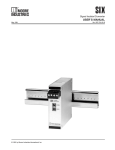
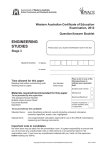



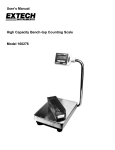
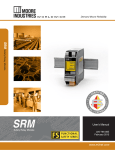



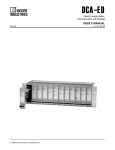


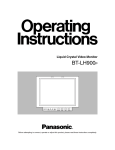

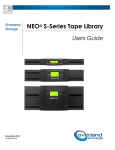
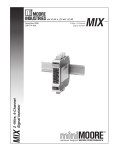

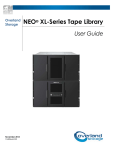
![ECT[DIN] [DIN] - Moore Industries International](http://vs1.manualzilla.com/store/data/005778735_1-93255c4f7d497ff32afcfe496e72d982-150x150.png)
